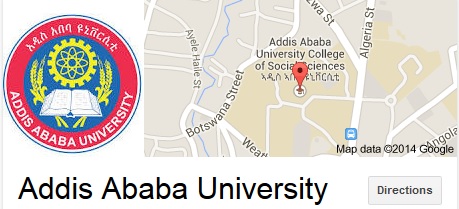Overview of Statistics
The Department of Statistics pioneered the training of middle level skilled and highly professional statisticians in Ethiopia. It presently offers B.Sc, M.Sc and PhD degree programs in Statistics. The graduates of these programs are serving in government and non-government organizations and the private sector including universities and research institutes. In addition, it offers statistics courses to various other programs of Addis Ababa University. The department in its current form was founded in 1973 and has grown steadily over the last 48 years to become an internationally recognized department of statistics education. The department currently has two full professors, four associate professors, six assistant professors and eleven lecturers. The department also has adjunct professors from Ethiopia, USA, South Africa and Austria.
In the late 1950’s as the duties and responsibilities of the central government began to expand and especially as the Ethiopian Government started to prepare a series of five year development plans, the need to collect, summarize and analyze empirical data became obvious. The shortage of junior (certificate), medium (diploma) and senior (degree) level professionals in the field of statistics became more acute. This was also true for the rest of the continent. To alleviate this shortage, based on the recommendations of the first African Statisticians Conference held in 1959, the UN established “International Statistical Training Centers” on regional basis. The training center for the East African Region was opened in 1961 in the Faculty of Science of the former Haile Sellassie I University. This center was named “UN International Statistical Training Center”. It used to provide a one-year programme leading to a certificate for candidates sponsored by different governments of this region. It operated from 1961 to 1966 and fund and technical assistance were provided by UN. During this period the enrollment from Ethiopia, Egypt, Libya, Sudan, Malawi, Zambia, Basutoland, and Somalia were 52, 24, 6, 34, 10, 4, 3, and 4 respectively. In 1966, to alleviate the shortage of medium and high-level statisticians the UN helped in the establishment of additional two programmes: a three-year diploma programme and a four-year degree programme. The first intakes of the degree and diploma programmes were the freshman class of 1966. Besides the regular programme, Certificate and diploma programmes were also introduced in the extension Division. One of the most interesting features of these programmes was their flexibility. Students who performed well in the certificate programme could continue into the diploma programme without wasting credits or time. The same was also true for transfer from Diploma into Degree programme. The reverse was also true i.e., students who performed poorly were advised to join a lower-level programme. In 1973, the Statistical Training Center was organized as the Department of Statistics and it has been running the degree programme for regular students and the Diploma Programme for extension students since then. In 1974 the certificate programme was terminated in both the regular and the extension divisions. In 1975 the diploma programme was confined to the extension division only. Page 5 of 223 In order to address the human resource requirement of the country in the field of Statistics, the Department launched MSc program in 1982/83 and a PhD program in 2012/13. The MSc program currently has Applied Statistics and Bio-Statistics streams while the PhD program has applied statistics, biostatistics and mathematical statistics streams. Beginning 2002/3 the duration of the B.Sc degree program was made three years following change in government education policy. In 2007/08 a joint effort was made by concerned public Universities to develop a curriculum for a four-year B Sc degree program in Statistics. However, with the desire (of the Ministry of Education) to develop a harmonized and an international standard curriculum for a three-years B.Sc. degree program in Statistics, a team of experts came up with a harmonized curriculum. The harmonized curriculum has been implemented since 2007/08 academic year. Beginning 2019/20 the duration of the B.Sc degree program has been made four years following change in government education policy.
Mission and Vision
Mission
There are three overlapping aspects to the department’s mission: teaching, research, and service. The teaching mission of the Department includes teaching statistics to non-majors; education of statistics majors to pursue graduate study or careers in statistics, education of graduate students in the statistics profession, and training of working professionals.
Vision
The Department of Statistics seeks to be a foremost center of excellence in statistical training, practice, applications and research and foster strong interdisciplinary links with other institutions that are involved in statistical activities.
Facilities and Materials
Textbooks and References
- Each course requires textbook(s) and reference materials and the Department is responsible to make available the identified textbooks and references;
- Students are encouraged to have copies of the textbook(s);
- Enough number of copies of textbooks and reference materials should be available at the University Libraries and Department book stores;
- Course outlines should be available for students;
- Textbooks and references should be kept up-to-date by the Department; textbook and defined course outline should be strictly followed.
Computer Labs for Statistics
- Well-equipped computer labs should be organized with quite good number of computers and internet connections;
- Popular statistical software such as MINITAB, R, SPSS and SAS should be installed to be utilized by students for statistical computation, simulation and analysis;
- Proper management of the labs and updating mechanism are required.
Classroom Facilities
Classrooms would be equipped with PC, LCD, overhead projector, blackboard, whiteboard and network to facilitate the teaching-learning process.







